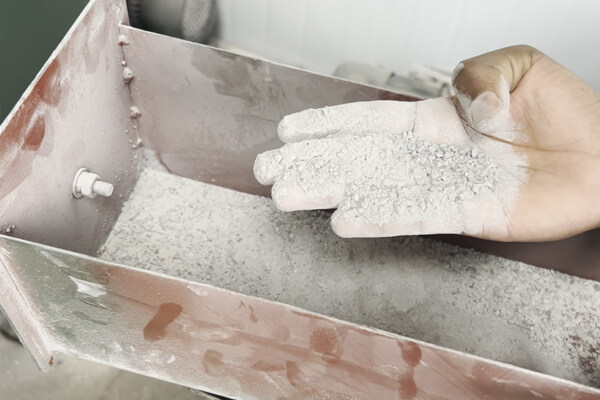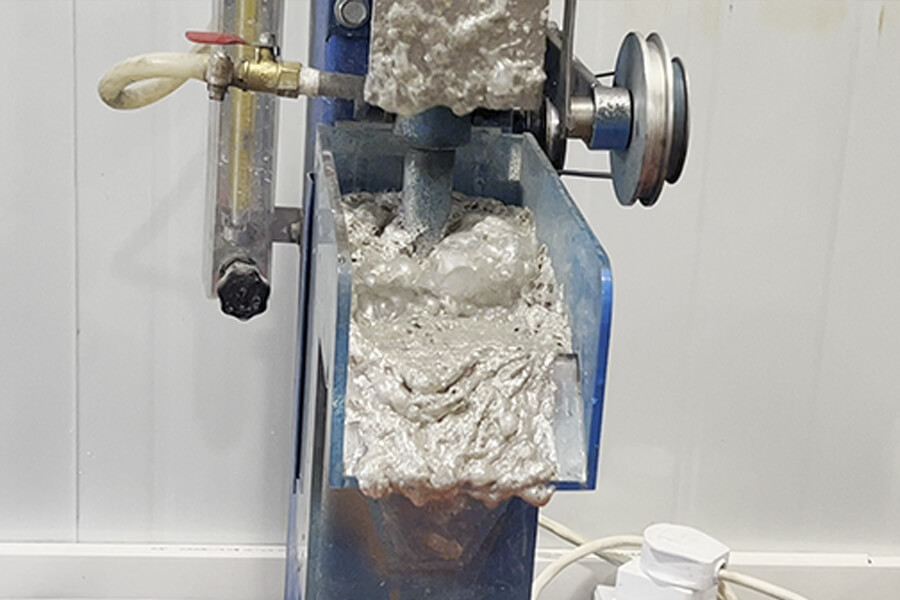Lepidolite is a lithium-containing mineral and an essential element used in the production of batteries for electronic devices. In recent years, lithium-ion batteries have attracted attention from the growing market for electric vehicles and portable electronic devices, and with it comes the need for a stable supply of lithium. In lepidolite processing, flotation is one of the most common techniques for separating lithium-bearing minerals from complex ores. It involves using chemicals and air bubbles to separate minerals based on their surface properties. Laboratory experimental of lepidolite and optimizing the flotation process are critical before scaling up to industrial operations.

Lab Lepidolite Ore Flotation Experimental Flow
Laboratory flotation experiment is important in developing efficient and cost-effective lepidolite processing methods. The testing involved using small flotation devices to determine the best conditions for separating lepidolite from gangue minerals such as feldspar and quartz. In laboratory tests, six steps are generally followed to ensure optimal lithium recovery.
1. Sample Preparation:
Obtain a representative lepidolite ore sample from the deposit. Once collected, these samples are initially crushed and ground to reduce their size and ensure homogeneity. It mainly involves using small jaw crushers, roller crushers, and laboratory ball mills to crush and grind lepidolite ore into smaller particles. Analyze the samples for specific fineness using X-ray diffraction (XRD). Granularity may vary depending on specific requirements and available equipment.
2. Reagent Selection:
Commonly used reagents may include collectors, foaming agents, modifiers, pH regulators, etc. Adjust the pH of the slurry to the value required for lepidolite flotation. The type and amount of reagent used will depend on the mineralogy and properties of the lepidolite ore.
3. Flotation Machine Setup:
Choose the suitable flotation machine and flotation cell. Clean the impurities in the equipment before experimental to ensure regular use and that the minerals are not polluted.
4. Conditioning and Flotation:
A predetermined amount of the prepared ore sample is weighed and added to the selected flotation device. Add water to the cells to form a slurry, add reagents and adjust run parameters according to the test plan. The impeller agitates the pulp to promote the interaction between mineral particles and chemicals.
5. Collect materials
After the flotation process, the froth product and tailings are collected separately. The froth containing buoyant lepidolite is usually collected from the top of the flotation cell using a froth squeezer or scraped off by hand. Collect the foam in a separate container for further analysis and evaluation.
6. Analysis and optimization
We can use various chemical, mineralogical, or particle size analysis techniques. Evaluate the test results and assess the efficiency of the flotation process and the performance of the flotation reagents used. As a result, we can adjust test parameters, reagent dosage or flotation conditions as needed to optimize the lepidolite flotation process.
Lab Lepidolite Flotation Experimental
In laboratory lepidolite flotation experimental, we usually use coarse crushing, fine crushing, grinding, and flotation processes, which can ensure the best recovery rate of lithium.
- The small jaw crusher crushes lepidolite ore into smaller particles.
- Hammer breaks the material into fine particles, and the minimum output can reach 0-1mm.
- The laboratory ball mill grinds the crushed ore into fine powder.
- Put the ground material into a manual sieve with 40 mesh. The manual screen is often used in laboratory equipment to replace the spiral classifier. It can screen out the particle size range suitable for the following process for preliminary desliming.
- Mix the fine powder with water to form a slurry, then pour it into the tank and dilute it with water to the desired concentration.

6. Start the motor and add an appropriate amount of flotation reagent according to the experimental requirements.
Collectors help bind minerals. The frother reduces the surface tension, making it easier for the air bubbles to attach to the minerals during flotation. When there is foam in the tank, turn on the switch of the scraper part to start flotation; after the specified flotation time is reached, turn off the motor to stop the impeller and scraper from running.
Asia-Africa International Laboratory lepidolite flotation experimental provides valuable information about this mineral’s chemical composition and properties, a valuable resource for the mining and refining industries. By providing accurate and detailed analysis of lepidolite samples, these tests can help identify potential sources of lithium and other valuable minerals. As demand for lithium continues to grow, we must utilize all available resources to ensure a sustainable supply chain. With laboratory mineral experimental, you can be sure that you are producing safe and efficient products that meet industry standards and can be used in various applications. Our team of experienced professionals utilizes state-of-the-art equipment and lab testing services to ensure the highest level of precision. Whether you are a researcher, miner or manufacturer, we invite you to take advantage of our services and discover the potential of lepidolite in your beneficiation field.
